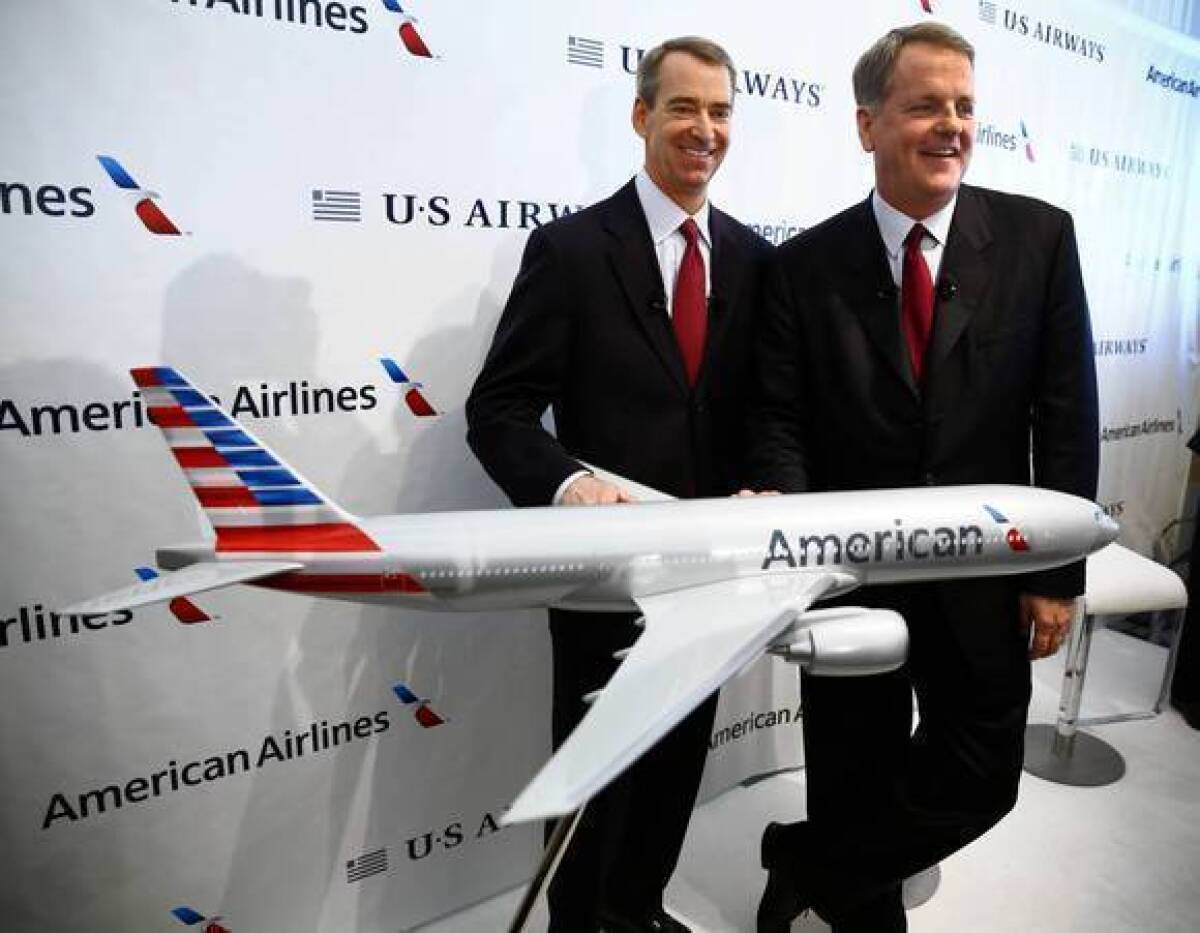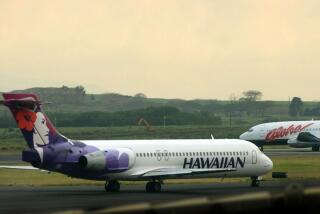Change is certain in the American Airlines-US Airways merger

- Share via
In the wake of the merger of American Airlines and US Airways, many business travelers are asking themselves the same question: What does this mean for me?
The only certain answer is change.
And change, according to some airline experts, is not welcomed by business travelers who have grown accustomed to their regular airline routes, connecting hubs and frequent flier programs.
“What I can see is 900 pitfalls,” said Joe Brancatelli, a business travel expert who writes a regular online column on the subject. “I don’t see an upside.”
The $11-billion deal announced last week would create the world’s largest airline, employing more than 100,000 workers and serving about 187 million passengers a year.
In announcing the merger, US Airways Chief Executive Doug Parker said the new airline probably would maintain all the hubs and destinations of the two carriers.
Brancatelli is doubtful. “When an airline tells you they are keeping everything, that is a lie,” he said.
Although the two airlines have very few routes that overlap, Brancatelli said, American and US Airways have several connecting hubs in the same region, some of which will have to be eliminated.
For example, he noted that US Airways operates a major hub in Phoenix while American operates a connecting hub in Dallas. Brancatelli suspects the merged airline will cut flights to Phoenix, making Dallas the primary hub for the region.
“These guys didn’t merge to make our lives better,” he said. “They merged for their own purposes.”
Still, executives from American and US Airways emphasize that the merger would primarily benefit frequent business travelers because, under the combined resources of the new carrier, they would be able to choose from 6,700 daily flights to 336 destinations in 56 countries.
Travelers who have acquired frequent flier miles with either airline can carry them over and redeem them on the new, larger carrier, they promise.
“There are only upsides,” said Thomas Horton, chief executive of AMR, American Airlines’ parent company.
American Airlines’ loyalty rewards program, AAdvantage, is the nation’s largest and has been ranked by several publications and analysts as one of the best.
AAdvantage is a three-tier system that rewards travelers with such perks as seat upgrades, free checked bags and early boarding for accumulating miles. Each tier represents a higher status level, such as AAdvantage Gold, AAdvantage Platinum, and AAdvantage Executive Platinum.
Most other airline loyalty programs, including US Airways’ Dividend Miles program, have four tiers and require passengers to accumulate more miles to reach elite status, according to travel experts.
How the AAdvantage and Dividend Miles programs will be merged has not been decided.
“At some point we will have to look at that,” said John McDonald, a US Airways spokesman. “What I can say is that we are going to do what is right.”
Alicia Jao, vice president of TravelNerd, a website that analyzes travel deals, said she suspects the rewards program for the merged airline will shift to a four-tier system to match the rewards programs at other airlines.
The change may upset American’s frequent fliers, she said, but they will probably understand that change is inevitable.
ALSO:
United Airlines fined $130,000 over delayed flight
Which airline has the rudest employees? Survey says ...
Airlines had lowest rate of lost luggage in 25 years in 2012
More to Read
Inside the business of entertainment
The Wide Shot brings you news, analysis and insights on everything from streaming wars to production — and what it all means for the future.
You may occasionally receive promotional content from the Los Angeles Times.











